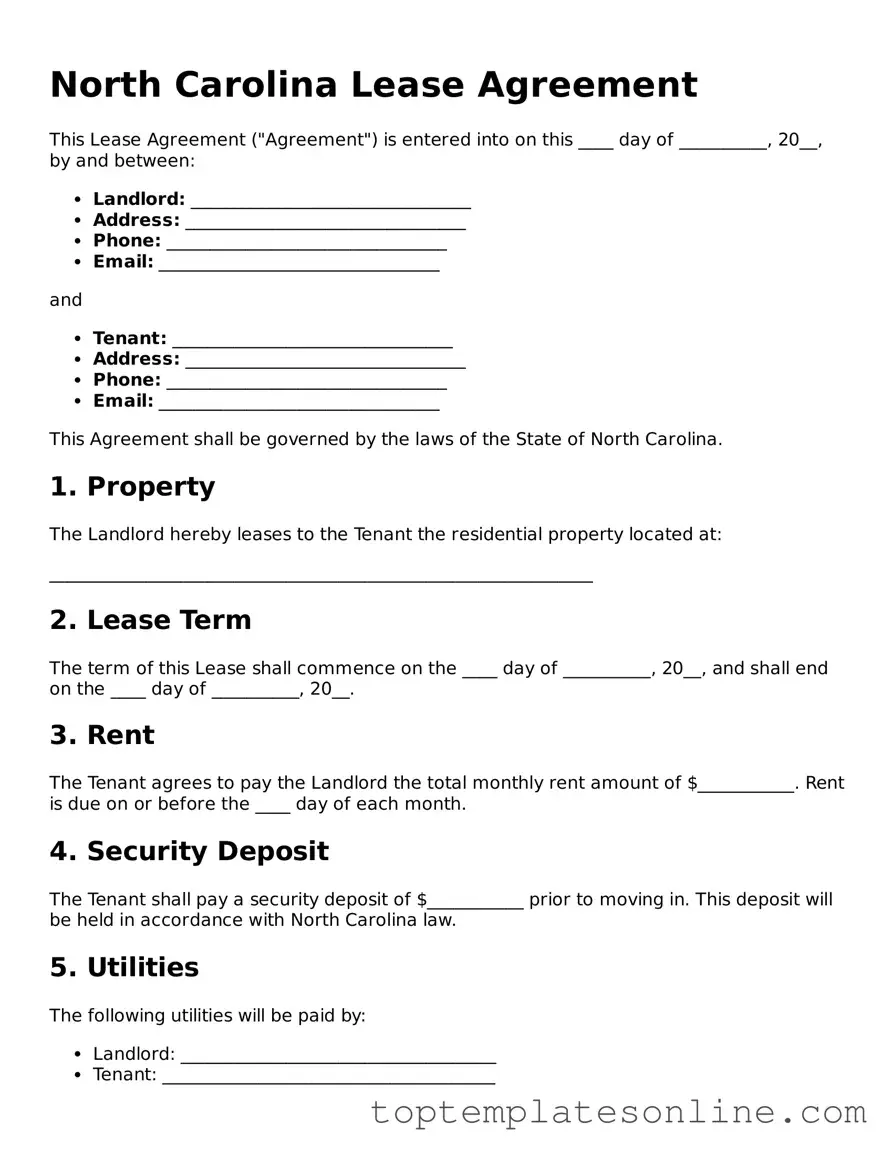Blank Lease Agreement Template for North Carolina State
A North Carolina Lease Agreement form is a legal document that outlines the terms and conditions between a landlord and a tenant for renting a residential property. This form serves to protect the rights of both parties and ensures that everyone understands their responsibilities. Understanding the details of this agreement is crucial for a smooth rental experience.
Customize Lease Agreement Here
